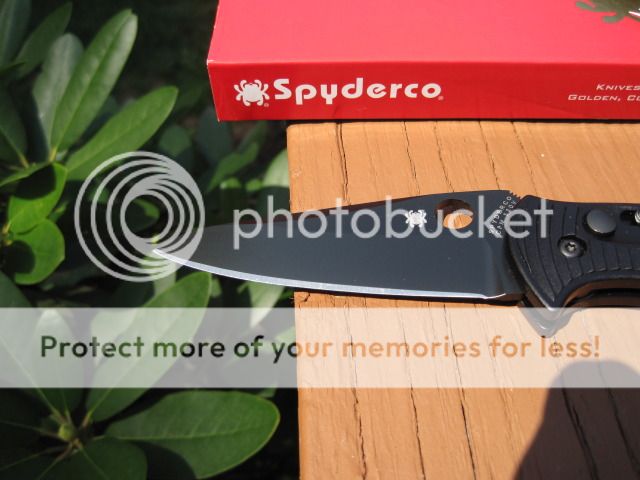- Joined
- Sep 5, 2005
- Messages
- 2,826
While perusing eBay last week I found two Spyderco Endura 4s (black with partial serrations) for $35 each, new. I have a green Endura 4 flat grind, which is a great knife, but I actually prefer the hollow grind on my black Endura as it gives me a decent spine. Both knives got here yesterday and I couldn't believe I got them for that price, (including shipping). 
I can appreciate the fine edges of a flat grind knife, but I also really like the extra strength of a decent hollow grind knife. Case in point, not only the Enduras, but the Cold Steel Voyagers. I have both the clip point (Bowie) blade and the Vaquero, and am mystified why no one seems to like the Vaquero much. I also picked up the tanto blade model (all XLG) and note that it has an enormous spine (and a couple of extra ounces, to boot). Still, it's clearly a much stronger knife. The spine gives it substantial chopping ability, which is totally lacking in the other two flat grind blades. But would I actually carry it?
No, not really. Not unless I was expecting emergency situations where I needed to pry or baton, which, frankly, doesn't happen very often. It made me wonder why Andrew Demko or Lynn Thompson packed so much steel into the blade. Also, would anyone want a flat grind tanto? I don't know. I would have appreciated a little more steel on top, but in this case I think Demko and Lynn Thompson went a little overboard.
What are the actual advantages of flat grind knives, anyway? Don't they end up weakening the blades in some cases? Nutnfancy wants to baton his flat grind clip point Voyager and he's already whacked on a hollow grind tanto Recon 1 (no failures). Still, I like the tanto version and wondered how many of you guys are packing an XLG tanto despite the weight? If not, how about the Vaquero? (I see self defense advantages with the Vaquero over the Bowie, but many prefer the Bowie.)
Thanks!

The CS Hold-Out (top) and Vaquero Voyager, both great knives with flat grind blades.
.
I can appreciate the fine edges of a flat grind knife, but I also really like the extra strength of a decent hollow grind knife. Case in point, not only the Enduras, but the Cold Steel Voyagers. I have both the clip point (Bowie) blade and the Vaquero, and am mystified why no one seems to like the Vaquero much. I also picked up the tanto blade model (all XLG) and note that it has an enormous spine (and a couple of extra ounces, to boot). Still, it's clearly a much stronger knife. The spine gives it substantial chopping ability, which is totally lacking in the other two flat grind blades. But would I actually carry it?
No, not really. Not unless I was expecting emergency situations where I needed to pry or baton, which, frankly, doesn't happen very often. It made me wonder why Andrew Demko or Lynn Thompson packed so much steel into the blade. Also, would anyone want a flat grind tanto? I don't know. I would have appreciated a little more steel on top, but in this case I think Demko and Lynn Thompson went a little overboard.
What are the actual advantages of flat grind knives, anyway? Don't they end up weakening the blades in some cases? Nutnfancy wants to baton his flat grind clip point Voyager and he's already whacked on a hollow grind tanto Recon 1 (no failures). Still, I like the tanto version and wondered how many of you guys are packing an XLG tanto despite the weight? If not, how about the Vaquero? (I see self defense advantages with the Vaquero over the Bowie, but many prefer the Bowie.)
Thanks!

The CS Hold-Out (top) and Vaquero Voyager, both great knives with flat grind blades.
.








